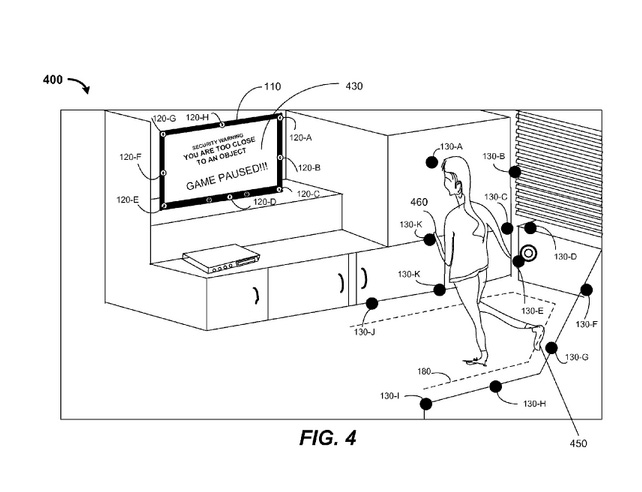Intel Patents Gaming System With "Safety Features"
Game systems that rely on gesture recognition for data input carry a potential for a player to unintentionally collide with surrounding objects.
We have grown accustomed to such scenarios since Nintendo decide to attach wristbands to its Wii Remotes and overeager Kinect players.
Intel has an idea to prevent objects from being damaged and players from being hurt. The company was just granted a patent that envisions proximity sensors to be built into game consoles that would trigger an alert or a game to be interrupted when a player may be too close to an object. From the patent:
"The gaming console may use the images of the full body movement and the images of the surrounding objects to determine if the user is close to the surrounding objects, which may cause collision with the surrounding objects. If the user is close to the surrounding objects, the gaming console may generate alert signals that may avoid or minimize the probability of collision of the user with the surrounding objects."
The patent was filed somewhat late, in March 2011, but was granted quickly in December 2012. The patent consists of hardware and software claims, where the hardware covers:
- a first set of sensors [that] continuously capture the first images of the body movement of the player - a first set of sensors [includes] a camera to capture the first images of the body movement of the player - a first set of sensors [that includes] a depth sensor to capture depth value of the first images of the body movement of the player - a second set of sensors [that captures] the second images of the objects surrounding the player at regular intervals of time - a first processor to determine proximity values based on a plurality of first position values and a plurality of second position values - a first processor [to] generate an alert signal and pause signal if the proximity values are within the threshold values - a second processor coupled to the first processor, wherein the second processor is to pause the game in response to receiving the pause signal
It would be unreasonable to conclude that Intel is suddenly interested in the video game console business. However, if we remember that Intel's core business intent is to sell more micro chips every year, then such patents make complete sense for the company.
Contact Us for News Tips, Corrections and Feedback
Get Tom's Hardware's best news and in-depth reviews, straight to your inbox.

Wolfgang Gruener is an experienced professional in digital strategy and content, specializing in web strategy, content architecture, user experience, and applying AI in content operations within the insurtech industry. His previous roles include Director, Digital Strategy and Content Experience at American Eagle, Managing Editor at TG Daily, and contributing to publications like Tom's Guide and Tom's Hardware.
-
virtualban So I can sue the companies when their technology fails instead of relying on common sense and self control.Reply -
SteelCity1981 Sorry grandma is wasn't my fault that i punched you in the face, my console said i wasn't too close to anything!Reply -
cookoy just tie one end of a rope around the player's waist and tie the other end of the rope to the dinner table. sensors can only warn. physical restraints will do better. cheersReply -
spentshells virtualbanSo I can sue the companies when their technology fails instead of relying on common sense and self control.Reply
Brilliant
-
InvalidError Using "two sets of sensors" (artificial vision) to reconstruct a real-world scene in virtual 3D is something that has been done over 10 years ago. Seems like Intel has essentially patented the idea of using something similar to predict potential collision hazards.Reply
I can see why Intel would be interested in that: major CPU hog. Processing HD stereo-3D in real-time for spatial analysis and collision avoidance with high enough precision to finely control games and applications using air-gestures would use most of current CPUs' time. While Kinect proves the general concept, its motion detection is much too coarse and laggy for fine control.
